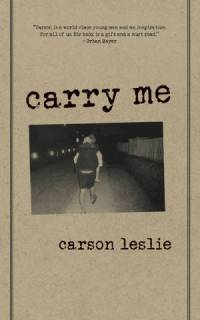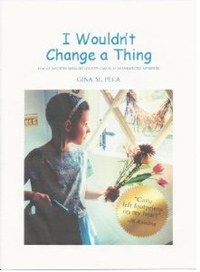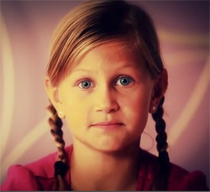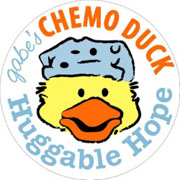 by Nathan Traller, Nathalie’s father
by Nathan Traller, Nathalie’s father
Editor’s Note: Nathan’s daughter was diagnosed with Aveolar Soft Part Sarcoma (ASPS) two years ago and he has been fighting to get her into a possible life saving clinical trial for PD1 and PDL1. Time and options have almost run out.
The Fault in Our Systems
I didn’t make up that title. Someone else who knows this road did. But there are some very big faults in what happens if you are diagnosed as a teen with a rare cancer.
It begins with research funding. Younger people tend to have rarer cancers less likely to have been brought on by the environmental wears and tears of modern life. Their cancers are less in total numbers. The “market” is smaller and more diverse. Diseases like  sarcomas are referred to as “the forgotten cancers.”
sarcomas are referred to as “the forgotten cancers.”
I used to think that cancer research was like finding some needle in a haystack, a futile effort no matter how much money is thrown at it. This is not true. In the last few years an increased understanding of the genomic profile of cancer cells including how they avoid detection from the body’s immune system is offering up new targets to stop growth and even kill off metastatic cancer. When we put in the effort, understanding IS coming. Nathalie’s cancer (Alveolar Soft Part Sarcoma) has been identified for at least 30 years but very little research has gone into it. I don’t say this to say “It’s not fair!” I mention this because I am energized to be part of the solution. I am not independently wealthy, but I am a teacher by trade and I can communicate. I can shine the light on people doing good things so more resources are directed toward them. I can stand up for patient groups that need a stronger voice. I can tell a story. I can explain things in new ways.
 I can tell my personal experience with visiting NCI (the National Cancer Institute) part of the NIH (National Institutes of Health) in Bethesda, Maryland. Since we basically heard there is “nothing we know to do for Nathalie” at our first biopsy meeting, I began researching and found a Phase II clinical trial run through NCI for ASPS. Work was done to approve her age at 13 and we began flying out to NIH. NIH made me proud to be an American. This facility and what is being accomplished for all diseases including rare ones makes it a true jewel. I know there are many who have issues with wasteful government spending and I typically agree. However funding NIH and the NCI is truly an investment that pays off in new life saving therapies and even economic growth. Time after time I encountered families with children who had hope for their rare disease through a novel therapy being pioneered there. Please do not see this through a red or blue political lens. Nathalie’s favorite color is purple and she has senators on both sides of the aisle battling for her. There are advances in science that should be made whether the market drives them or not.
I can tell my personal experience with visiting NCI (the National Cancer Institute) part of the NIH (National Institutes of Health) in Bethesda, Maryland. Since we basically heard there is “nothing we know to do for Nathalie” at our first biopsy meeting, I began researching and found a Phase II clinical trial run through NCI for ASPS. Work was done to approve her age at 13 and we began flying out to NIH. NIH made me proud to be an American. This facility and what is being accomplished for all diseases including rare ones makes it a true jewel. I know there are many who have issues with wasteful government spending and I typically agree. However funding NIH and the NCI is truly an investment that pays off in new life saving therapies and even economic growth. Time after time I encountered families with children who had hope for their rare disease through a novel therapy being pioneered there. Please do not see this through a red or blue political lens. Nathalie’s favorite color is purple and she has senators on both sides of the aisle battling for her. There are advances in science that should be made whether the market drives them or not.
Children’s cancer perfectly illustrates this. Back to Nathalie, her life was saved by an oncology surgeon at NIH who performed the “can’t be done” surgery for Nathalie. The NCI is continuing research with an ASPS tumor bank and genomic studies of Nathalie’s tumor. The fact that NCI’s budget has been cut by 30% over the last three years is bad news for everyone. The other “fault in our system” is that only 4 cents of each NCI dollar goes to pediatric cancer research. More money will fund prostrate cancer research than all pediatric cancers combined. I’m not motivated to draw away adult cancer research, simply as a teacher I must speak up for those quiet voices that don’t have dollars chasing them.
So what happens when research does result in a breakthrough in the lab? How does it make it’s way to the clinic? And what happens if the patient is under 18? It is said that the drug “pipeline” to FDA approval averages 5-7 years. No longer are clinical trials desperate last ditch efforts. Increasingly they represent the “latest technology” and can  actually be a better first-line choice in some instances. Unfortunately our systems create a scenario where the vast majority of trials are set with an age limit of 18. A patient with a rare disease such as Nathalie (now, age 15) loses out on a primary weapon to combat her disease. It is not uncommon for pediatric trials to be launched after the drug has already received FDA approval. Pediatric trials have far fewer patient slots available and often err on the side of highly conservative dosage and inclusion criteria. Our clinical trial models are due for a major overhaul. They are often modeled after past templates that have gained approval. We need more “2.0 clinical Trials” like the Lung MAP trial that uses biomarkers to steer lung cancer patients flexibly down various paths and meds based on their unique tumor.
actually be a better first-line choice in some instances. Unfortunately our systems create a scenario where the vast majority of trials are set with an age limit of 18. A patient with a rare disease such as Nathalie (now, age 15) loses out on a primary weapon to combat her disease. It is not uncommon for pediatric trials to be launched after the drug has already received FDA approval. Pediatric trials have far fewer patient slots available and often err on the side of highly conservative dosage and inclusion criteria. Our clinical trial models are due for a major overhaul. They are often modeled after past templates that have gained approval. We need more “2.0 clinical Trials” like the Lung MAP trial that uses biomarkers to steer lung cancer patients flexibly down various paths and meds based on their unique tumor.
But what about Compassionate Use Access? Isn’t that sort of a moral safety valve for a company to provide a life-saving medicine to a patient who may not be trial eligible? The process exists and is supported through the FDA but is dependent from the start on a company’s willingness to provide the medicine. Consider the breakthrough area of PD1/PDL1 checkpoint inhibitors. This class of drug has shown exciting game changing  results and has resulted in perhaps some of the largest clinical trials in history. The potential has dominated ASCO’s Annual meeting two years in a row. So how many patients have received compassionate use access of this class of drug being tested by four major pharmas? I challenge you to find a single patient. Unfortunately I can list off those who have died asking. Nathalie’s oncologist requested access for her based on her dire need and scientific clues suggesting efficacy in September 2013. I’ll let you be the teacher and assign this system it’s grade.
results and has resulted in perhaps some of the largest clinical trials in history. The potential has dominated ASCO’s Annual meeting two years in a row. So how many patients have received compassionate use access of this class of drug being tested by four major pharmas? I challenge you to find a single patient. Unfortunately I can list off those who have died asking. Nathalie’s oncologist requested access for her based on her dire need and scientific clues suggesting efficacy in September 2013. I’ll let you be the teacher and assign this system it’s grade.
It is time to roll up our sleeves. It is said that cancer will touch 1 in 3 Americans. It is time to close up these faults with better ideas and new systems. It’s time to Step Up and invest in research that will pay huge dividends.
Author: Nathan Traller
Nathan Traller is a teacher and patient advocate along with his daughter Nathalie. Find out more at www.4Nathalie.com Read Nathalie’s blog at kickASPS.wordpress.com
Editor’s Note: Here’s how you can help:

















Reblogged this on HOPE ALWAYS and commented:
Read This awesome post from Four-Square Clobbers Cancer blogger Nathan Traller…
Pingback: Compassionate Use | Four-Square Clobbers Cancer
Pingback: Fixing the Faults | Four-Square Clobbers Cancer